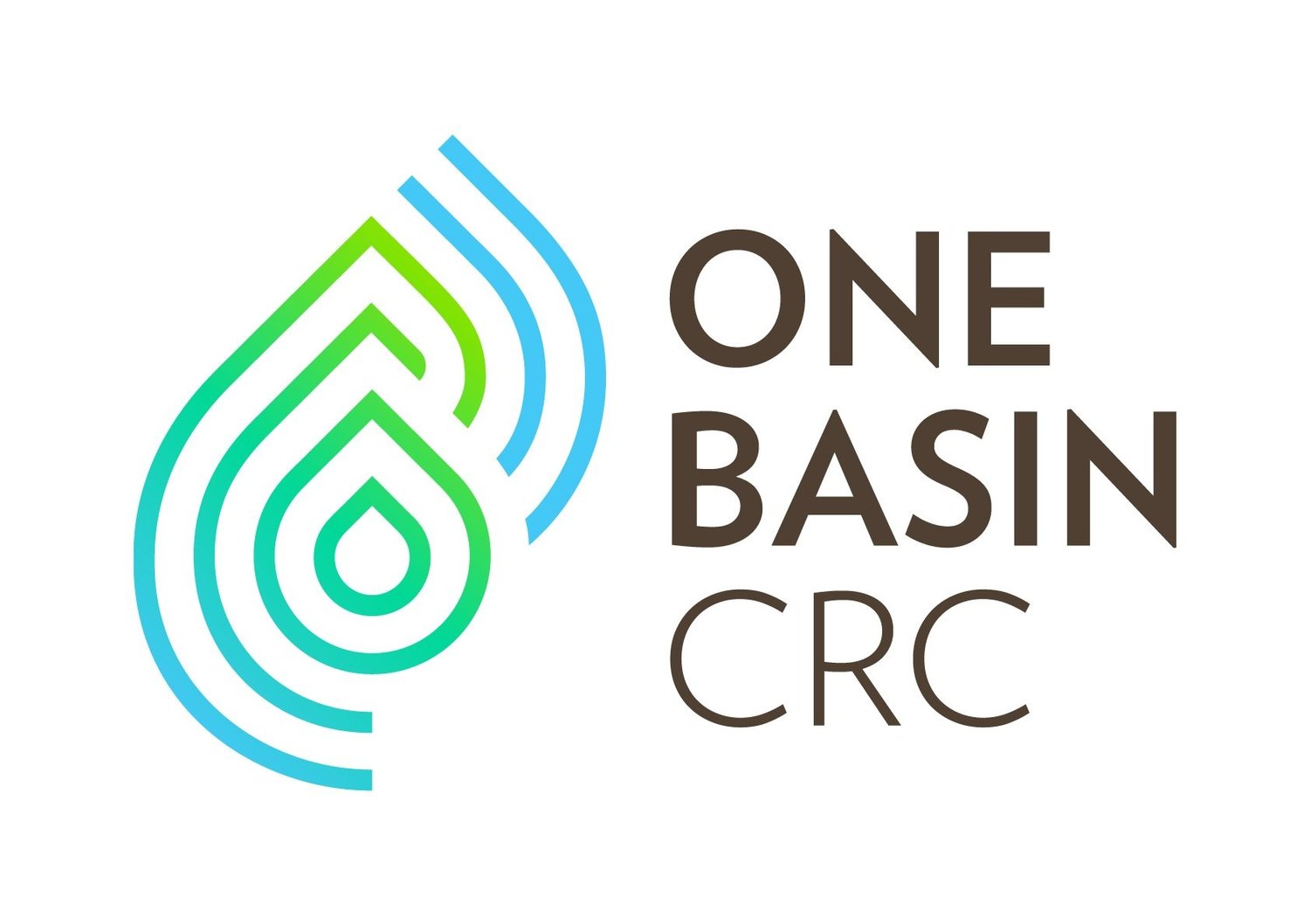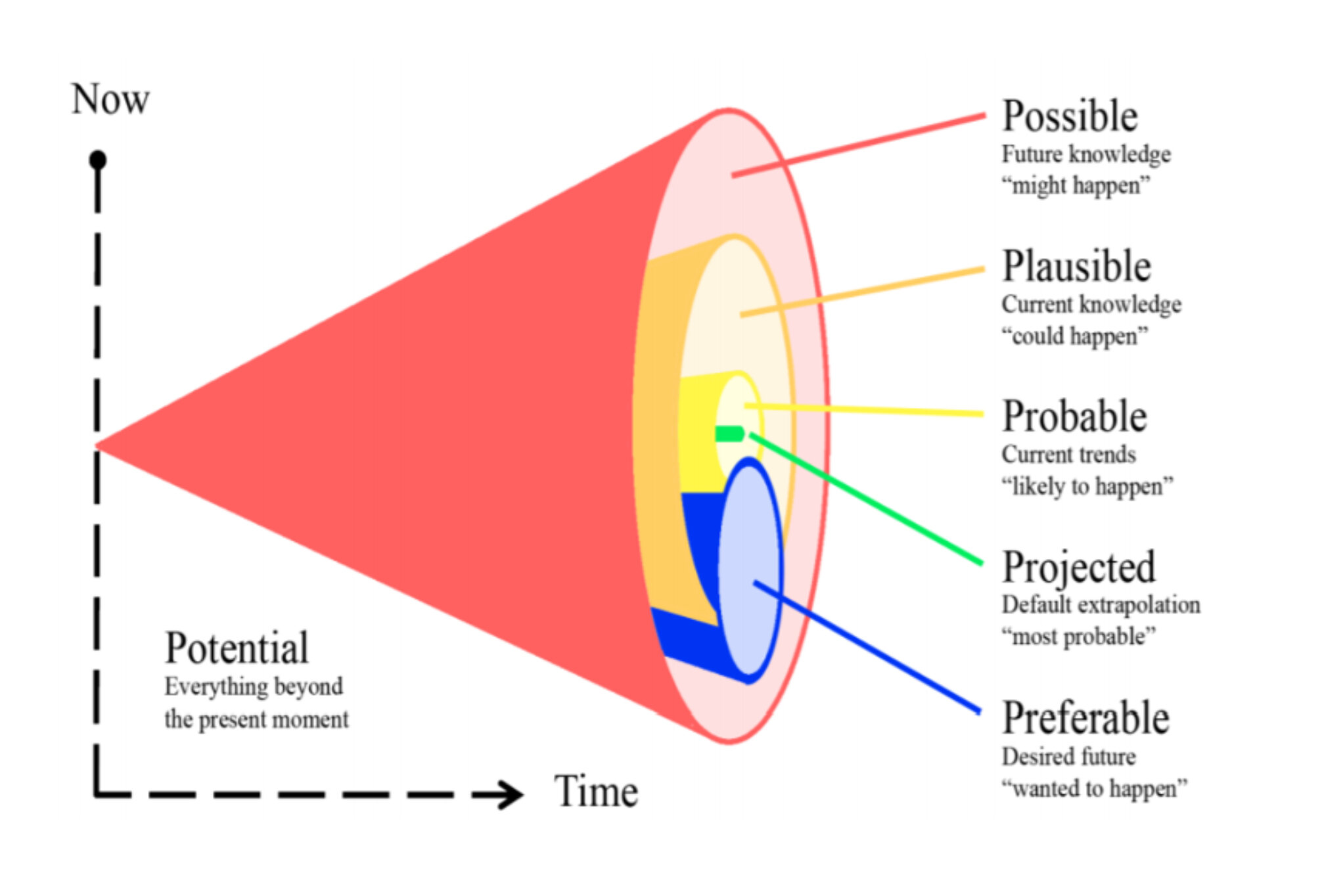Coping with multiple plausible futures under climate change
In order to be able to plan and manage our water resources it is important to understand what the future might look like. Climate change means that we can no longer rely on the records of historical climate to inform our decision making for the future. Over the past 20 years advancements have been made in climate science and the implications for water supply. We have shifted from trying to understand the future with a single estimate based on adjusting historical streamflow (e.g. Sustainable yields), to generating more complex representations acknowledging the future might unfold in a multitude of ways (e.g. stochastic data generation). What we know from these advances is that the range of possible futures is much more variable that our historical experience.
So while the science has improved our understanding of the “cone of futures” (Figure 1), there remains a challenge in linking advances in climate science and streamflow modelling to the actual decisions that water resource managers and landowners need to make. Faced with these possible, plausible and probable futures, which of these scenarios do should be relied on to inform decisions. The models and tool that are currently available lead planners to make their decisions based on our “best prediction” of what future might unfold. However, we know from experiences such as the millennium drought—which prior to the event was only predicted with a less than 5% chance of occurring—that it is often the less likely events with more severe consequences that pose the greatest threat to water resource management at the basin, regional and on-farm scale. To make robust decisions in the face of large uncertainty, we need new tools and methods that allow us to understand the implications of our decisions across the full range of plausible futures to we are in a position to manage severe events prior to them unfolding.
Figure 1: The cone of futures (Voros, 2003)
The importance of linking progress in climate science through to decision making has led to the development of so called “bottom up” methods. These “bottom up” methods turn the traditional approach to understanding climate risks around. Instead of starting with a climate scenario or projection and modelling what the outcome would be, the bottom up approach starts with asking what are we managing for, and what shift in climate (temperature, rainfall etc) or other future changes (e.g. bushfires) would lead to a failure to meet our management objectives (Figure 2). In other words, how vulnerable is the current management approach to incremental changes in the rainfall, temperature, seasonality or other attributes. The full range of possible futures can then be compared to this vulnerability assessment to understand the risk. This vulnerability assessment provides a means to assess the complete cone of futures in a way that relates back to management objectives and decisions. It forces the discussions of scenarios which while not the most likely, pose the greatest risk. The modelling element is embedded within a stakeholder engagement process. Different management responses can then be explored through the same modelling approach, discussing each option and results with stakeholders and iterating the process.
Figure 2: Classical top down approach compared to a bottom up approach (Kwadijk et al, 2010)
The bottom up approaches have already been used in a range of water management applications including wetland management (Nanda et al, 2018), infrastructure investment (Timmermans, 2020) and water supply system (Culley, 2016). More recently, the approach is being applied to environmental water management in a river catchment (John et al, in prep).
A further challenge for the water industry is that from the farm-scale to the basin scale, behaviour is constantly changing to accommodate and adapt to new environmental, social and economic drivers. Decisions at the farm-scale have implications for regional and basin wide water resource management and visa versa. Under a changing climate, the decisions that people make will change. There is no existing modelling capability, nor engagement approach, that links together the objectives, values and dynamic behaviour across these different scales.
There is a need to build new capability to stress test on-farm management options and regional and basin planning strategies under future scenarios. This will enable water planning agencies and farming communities to identify incremental, transitional and transformational changes required to successfully adapt with unfolding and unpredictable changes in climate, economics, societal values and technology. Developing this new capability will require the coupling of modelling and engagement processes to ensure that target crucial decisions being made in the Basin.
As Charles Darwin said “It is not the strongest of the species that survive, nor the most intelligent, but the ones most responsive to change.” Our future modelling for climate change in the water sector needs to help managers plan robust decisions and pathways to respond to uncertain futures.
For further information
Presentation on coping with multiple plausible futures in the face of climate change
https://watermodelling.org/news/event-summary-coping-with-multiple-plausible-futures-in-the-face-of-climate-change
Open access book on Decision making under deep uncertainty
https://link.springer.com/book/10.1007/978-3-030-05252-2
References
John A, Horne A, Fowler K, Nathan R, Stewardson M, Murray, P (in prep) Applying a bottom up approach to environmental water in the Goulburn River catchment.


